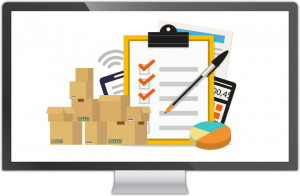The good management of its invoicing is an important dimension in the development of any activity. The best invoicing software for small business is what makes it possible to formalize a transaction with a customer. Whether for the sale of goods or services, it is a mandatory supporting document in accounting and taxation.
Defining your billing process well should be one of the first things to put in place before you get into serious business. As we will see in this article, there are many advantages of using billing software for small businesses. This software will help you stand out and save time.
First, let’s find out how to properly manage your invoicing and the things to always keep in mind!
What is invoicing?
Billing is the act of issuing an invoice. An invoice is a general ledger document that proves a purchase or a sale. Also called commercial invoice, final invoice or standardized invoice, it reports the amount owed by a debtor to a creditor. The invoice lists what was sold to a customer and how much he is due in return.
The invoice is an official document, which must include a certain number of elements and mandatory information, under penalty of receiving sanctions. We invite you to read our article on the mandatory information to indicate on an invoice in France and an invoice in Quebec to be sure that you are always in order.
Note that it is not possible to delete an invoice from an accounting point of view. The numbering of your invoices must be continuous. To correct an invoice, you must:
- Or issue a new one, explicitly mentioning the canceled invoice
- Either produce a credit note (total or partial) mentioning the reference of the associated invoice
Invoicing is mandatory for all businesses. For each transaction, it must be edited in two copies, one for the company and the other for the customer.
You can offer a paper invoice or an electronic invoice (also called an e-invoice). As we will see in the last part of this article, we advise you to favor online invoicing for your exchanges.
What are the different types of invoicing?
In the course of your interactions with your customers and providers, you may find yourself confronted with other types of invoicing than “traditional” invoicing. These billing methods are based on the same type of document, but define other kinds of transaction.
Here are the main types of invoicing:
The interim invoice (also called the provision, down payment or advance invoice) is a billing method that allows a customer’s payment to be spread over a given period. The amounts paid are deducted from the total amount owed by the customer.
The periodic (or recurring) invoice is similar to the interim invoice. The main difference is that the service provided is the same each time. It corresponds to the performance of specific and recurring tasks (maintenance, content creation, service, etc.). It can take the form of a lump sum spread over time.
The regularization invoice makes it possible to regularize the situation taking into account the actual services provided. If, for example, you take less time than expected to achieve what was planned, or on the contrary there are additional costs, the adjustment invoice is made to rebalance the situation with your client.
The closing invoice is used when you complete a service for your client. It is used to invoice the remaining amount due. It closes the contract between the service provider / supplier and the customer.
The invoice owes is an invoice that summarizes everything a customer owes a supplier. It is not necessarily limited to a single benefit.
The credit note, also called a credit note, constitutes an acknowledgment of debt addressed to a customer. It is used, for example, to make a refund to its customer following overbilling. It then reduces the total amount due.
The pro forma invoice is a commercial document that works like an official quote but is presented in the form of an invoice. A pro forma invoice has no legal or book value. It must therefore remain provisional.
For more details, please visit: alfacybernetics.com
 Universal Bloggers
Universal Bloggers




